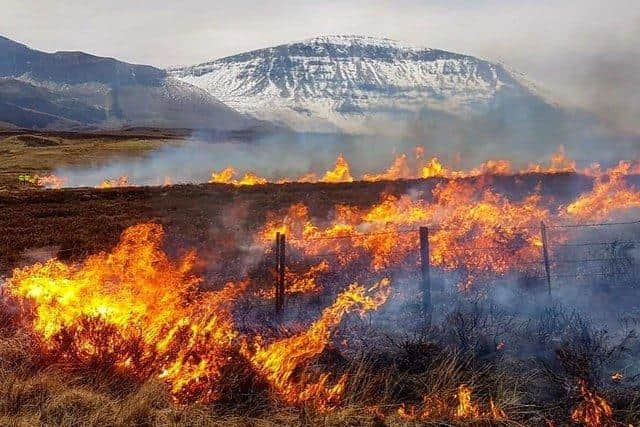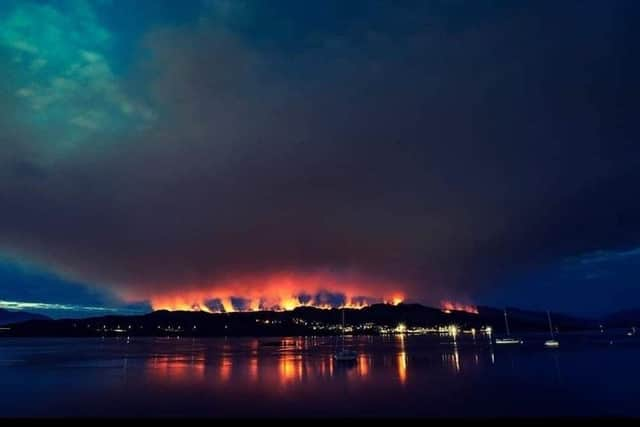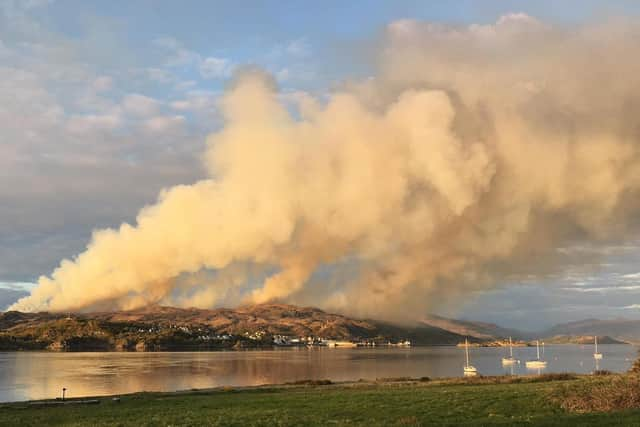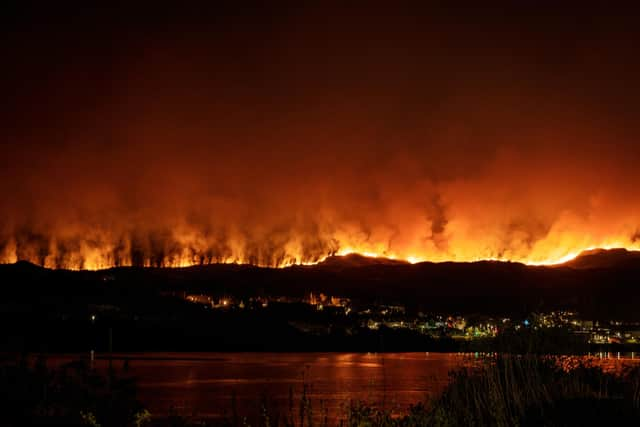Muirburn can protect against wildfires in 'tinderbox' Scotland, land managers claim
The warning comes after a major blaze broke out near Kyle of Lochalsh in the northwest Highlands, burning for more than 24 hours and ravaging several miles of the landscape before emergency workers got the flames under control.
The latest fire comes after a spate of similar incidents in recent weeks, including a large one on the Isle of Lewis and others at Ben Lomond in Lomond and the Trossachs National Park, on Gruinard Island in Wester Ross and near Dornoch in Sutherland.
Advertisement
Hide AdAdvertisement
Hide AdThe threat of wildfires in Scotland is highest in spring, when the country is like a ‘tinderbox’ due to an abundance of dead and dry vegetation to act as fuel.
But hot, dry summer weather can also raise the likelihood of a blaze starting.
Statistics suggest most fires – around nine out of ten – are sparked by human activities.
Gamekeepers and estate workers say muirburn, a practice that has prompted controversy over its impact on wildlife and habitats, offers an effective way to lower the chances for fires to take hold and spread if ignited.


Controlled fires can burn off dry and withered vegetation to minimise the amount of combustible material available to feed fires on moors and hillsides and help them spread, they say.
Similar techniques are used in other countries where wildfires are even more common.
“All of us – land managers, government and the public – should be concerned about a proliferation in wildfire events,” said Tim Baynes, moorland director at membership organisation Scottish Land & Estates.
“Not only do wildfires release huge amounts of carbon into the atmosphere, they also have the potential to devastate peatland and woodland sites.


Advertisement
Hide AdAdvertisement
Hide Ad“It is vital that we manage this increased risk appropriately and whilst encouraging education on how wildfires start and then spread.”
A study published by Met Office scientists earlier this year warned of an increasing danger from wildfires in the UK as a result of climate change.
The researchers concluded that wildfires should be considered an “emergent risk” for the nation and highlighted the potential impacts on the environment – warning “irrecoverable damage to peat soils is a particular concern as they represent a significant store of carbon, especially in Scotland”.
Members of the Scottish Gamekeepers Association (SGA) fear the current drive to plant more trees and encourage natural landscape regeneration in a bid to reduce greenhouse gas emissions and reverse the loss of wildlife could also provide more fuel for fires.


A spokesman for the SGA said: “Scotland is encouraging more and more afforestation and shrub cover.
“Whilst this may be beneficial for climate change, it also encourages the build-up of flammable fuel across the landscape, at the same time as weather is changing.
“Without management of this fuel load, wildfires can burn over extensive areas.
“Even if the ground is sodden in late spring and early summer a fire will take hold if vegetation above is dry.
Advertisement
Hide AdAdvertisement
Hide Ad“Once big fuel loads are burning, fire can spread quickly and pass over wet ground – even skipping over roads and rivers if flames are high and burning with enough intensity.”


The muirburn season in Scotland usually lasts from 1 October to 15 April, but there are plans to bring in licencing for the practice later this year.
“There is little doubt that Scotland is experiencing more wildfires in recent years,” Mr Baynes added.
“We are seeing wetter winters but in other periods, particularly in spring, rainfall is less than it was historically.
“This has led to prolonged drier conditions where dead vegetation is more susceptible to wildfires.
“These are often started accidentally and can spread quickly.
“In countries with higher temperatures, such as Australia, the US and Spain, controlled burning has been practised for a long time to prevent wildfires.
“Domestically, the Scottish Fire & Rescue Service has recently endorsed it as an important land management tool to reduce fuel load and avoid the sort of ferocious blaze witnessed in the Flow Country in 2019 which releases carbon.”
Advertisement
Hide AdAdvertisement
Hide AdOccurrences of wildfires have been increasing in the UK and across the world in recent years, driven by climate change, and claiming lives.
Last weekend, the Scottish Fire and Rescue Service (SFRS) issued an ‘extreme wildfire risk’, citing weather conditions such as low humidity, sunshine, dry conditions and winds, and urged caution. Wildfires are often tackled by hand, with beaters, by crews with support from local land workers.
It stated: “Dead grass, leaves, twigs and heather on the ground will dry quite quickly in these conditions and when ignited can burn very fast with extreme fire intensity.”
Across Scotland, a serious fire in the northern Highlands burned for almost six days in May 2019 and caused serious damage to more than 20,000 acres of globally important peatlands in Sutherland.
And last February firefighters tackled 24 blazes in just three days on Hebridean islands
In May 2018 a large blaze took hold on Arthur’s Seat in Edinburgh, with six fire engines and around 30 firefighters armed with water backpacks called in to tackle the flames.
In spring 2013, firefighters battled more than 80 wildfires across the Highlands in a single week.
Deputy Assistant Chief Officer Bruce Farquharson, wildfire lead for the SFRS, said: “The service is adapting to meet the predicted rise in weather extremes in the years to come to protect communities.
Advertisement
Hide AdAdvertisement
Hide Ad“We are in the process of introducing a National Wildfire Strategy which considers the increased risk of wildfire and changing climate in Scotland.
"The strategy includes the latest developments in wildfire management, training and operational procedures, as well as advances in PPE and equipment technologies.
"We will continue to work closely with the land management sector to ensure we have an effective partnership approach to prevent wildfires."
Comments
Want to join the conversation? Please or to comment on this article.
